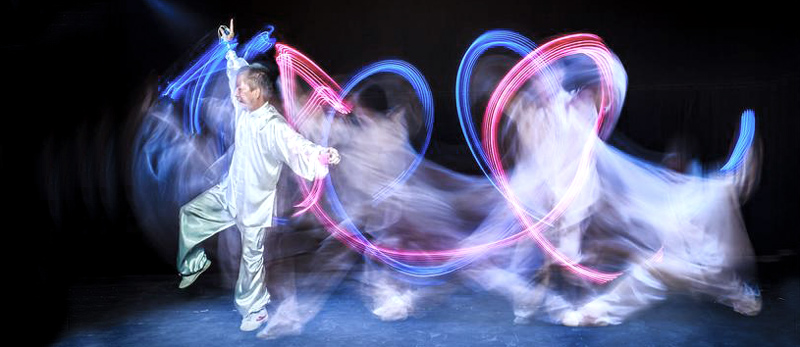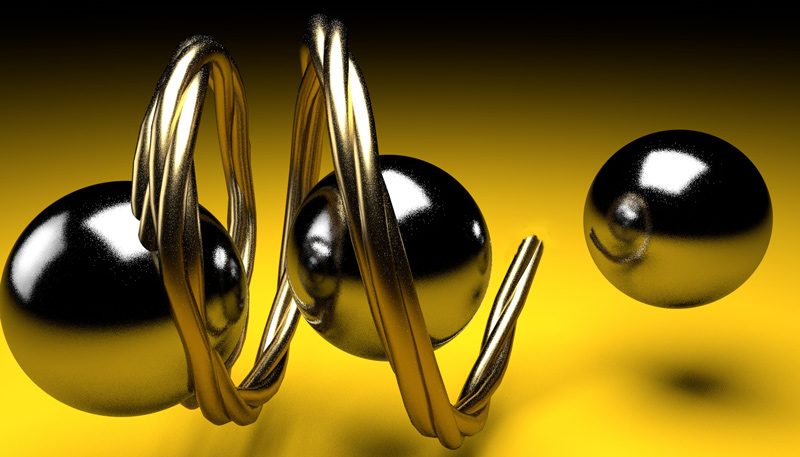An Introduction to the Six Harmonies in Taijiquan

Taijiquan (Tai Chi) is a martial art transcending physical movement. It is a holistic practice that weaves together the internal and external aspects of the human experience to cultivate balance, harmony, and inner strength. Central to this practice are the internal and external harmonies, which guide practitioners in aligning their mind, energy, and body.
The internal harmonies—Shen, Yi, Qi and Jin —focus on the inner workings of the spirit, intention, and energy. These principles teach us to cultivate a calm and focused state of mind, direct our energy with clarity, and transform it into refined power. By understanding and integrating these harmonies, practitioners can achieve deeper mindfulness and internal strength.
On the other hand, the external harmonies emphasize the coordination of physical movements. By aligning the hands with the feet, hips with the shoulders, and elbows with the knees, practitioners learn to move with precision and grace. These external principles ensure that the body’s movements are efficient, balanced, and powerful.
Together, the internal and external harmonies form the foundation of Taijiquan, creating a practice that nurtures both the mind and body. Whether you are a seasoned practitioner or new to Tai Chi, exploring these harmonies can enrich your practice and bring a deeper understanding of this ancient art.
The Three External Harmonies in Taijiquan
Taijiquan (Tai Chi) is renowned for its smooth, flowing movements and profound internal principles. While the internal harmonies focus on the alignment of mind, energy, and spirit, the three external harmonies emphasize the coordination of the body’s physical parts. Let’s delve into these external harmonies and explore how they contribute to the effectiveness and beauty of Taijiquan.
Hands Harmonize with Feet
The first external harmony is hands harmonize with feet. This principle ensures that the movements of your hands and feet are coordinated. In practice, when one hand moves forward, the corresponding foot should also advance. This synchronization creates a balanced and controlled motion, allowing for a stable and fluid form. It teaches practitioners to maintain equilibrium and alignment, essential for both defensive and offensive manoeuvres.
Hips Harmonize with Shoulders
The second harmony, hips harmonizing with shoulders, is crucial for the effective transfer of force and maintaining proper body alignment. When your hips rotate, your shoulders should follow suit. This coordination ensures that the body’s core muscles are engaged, providing a stable base and enhancing the power of your movements. It also helps in achieving a smooth transition between different postures, making your form appear seamless and graceful.
Elbows Harmonize with Knees
The third external harmony is elbows harmonize with knees. This principle ensures that your upper and lower body work in unison. When your elbows bend or extend, your knees should move in coordination. This alignment maximizes the efficiency of your movements, allowing for better balance and control. It also helps in generating power from the ground up, a fundamental aspect of Taijiquan’s martial applications.
Integrating the External Harmonies
 The three external harmonies are not just about moving the body parts together; they are about creating a unified and harmonious movement that reflects the principles of Taijiquan. By coordinating hands with feet, hips with shoulders, and elbows with knees, practitioners develop a greater sense of body awareness and control. This integration leads to more efficient energy flow (Qi), allowing for powerful yet graceful movements.
The three external harmonies are not just about moving the body parts together; they are about creating a unified and harmonious movement that reflects the principles of Taijiquan. By coordinating hands with feet, hips with shoulders, and elbows with knees, practitioners develop a greater sense of body awareness and control. This integration leads to more efficient energy flow (Qi), allowing for powerful yet graceful movements.
In essence, the external harmonies teach us that every part of the body should work together as one cohesive unit. This not only improves the physical aspect of Taijiquan but also enhances the practitioner’s overall sense of balance and harmony. By mastering these harmonies, one can achieve a deeper level of understanding and proficiency in Taijiquan, making each movement a perfect blend of strength and grace.
The Three Internal Harmonies of Taijiquan: Shen, Yi, Qi, to Jin
Taijiquan is more than just a series of graceful movements—it’s a profound journey into the mind-body connection. At its core, Taijiquan emphasizes the integration of the internal and external aspects of our being, fostering harmony and balance. Among its many principles, the three internal harmonies stand out as essential for cultivating deep, internal power and clarity in practice. Let’s explore these harmonies through the concepts of Shen, Yi, Qi, and Jin.
Shen and Yi: The Heart of Intention
Shen is often described as the spirit or mind, representing our inner vitality and consciousness. In Taijiquan, cultivating Shen involves developing a calm, focused, and clear state of being. Yi, on the other hand, is the intention or mental focus. It’s the directive force that shapes our actions.
The first internal harmony, Shen harmonizes with Yi, underscores the importance of aligning your spirit with your intention. When your Shen is calm and focused, your Yi becomes clear and purposeful. This clarity of intention guides your practice, allowing you to move with both grace and precision. Essentially, a focused mind (Yi) is grounded by a calm and vital spirit (Shen).
Yi and Qi: Directing Energy
Qi is the life force or energy that flows through the body. In Taijiquan, the effective use of Qi is essential for powerful and efficient movement. The second internal harmony, Yi harmonizes with Qi, highlights the relationship between intention and energy.
When your Yi (intention) is clear and directed, your Qi follows. This principle is akin to a commander leading their troops; a well-guided intention directs the flow of energy throughout the body. Practicing with a strong Yi ensures that your movements are not just physical gestures but are powered by an internal flow of energy, making them more effective and impactful.
Qi and Jin: Cultivating Refined Power
Jin is the refined internal power developed through the disciplined practice of internal martial arts. It’s not about raw strength but about a subtle, controlled force that emerges from harmonizing the body, mind, and energy. The third internal harmony, Qi harmonizes with Jin, encapsulates this transformation.
Properly directed Qi translates into Jin, enabling precise and powerful movements. This harmony signifies that your energy (Qi), when guided correctly, results in the cultivation of Jin, the refined power. It reflects the journey from internal energy to external expression, where your movements become effortless yet profoundly powerful.
Integrating the Internal Harmonies
 Together, these harmonies form a cohesive framework that guides your practice of Taijiquan. By aligning your Shen with Yi, you establish a clear and focused intention. This intention (Yi) then directs your Qi, ensuring that your energy flows smoothly and effectively. Finally, when your Qi is harmonized with Jin, your movements embody refined internal power, making your practice both effective and elegant.
Together, these harmonies form a cohesive framework that guides your practice of Taijiquan. By aligning your Shen with Yi, you establish a clear and focused intention. This intention (Yi) then directs your Qi, ensuring that your energy flows smoothly and effectively. Finally, when your Qi is harmonized with Jin, your movements embody refined internal power, making your practice both effective and elegant.
In essence, the three internal harmonies teach us that true power in Taijiquan arises from the integration of spirit, intention, and energy. By cultivating these harmonies, we not only enhance our martial arts practice but also nurture a deeper sense of balance and harmony in our daily lives.
Let your practice be a journey of self-discovery and internal growth, where every movement is an expression of the profound unity of Shen, Yi, Qi, and Jin.
Conclusion
Taijiquan is a deeply transformative practice that intertwines the mind, body, and spirit. By understanding and integrating the internal and external harmonies—Shen, Yi, Qi, and Jin alongside the coordination of hands with feet, hips with shoulders, and elbows with knees—practitioners can achieve a profound sense of balance and inner strength. These harmonies not only enhance martial skills but also cultivate a deeper sense of well-being and harmony in everyday life. Whether you are on a journey of self-discovery or seeking to refine your practice, the principles of Taijiquan offer a pathway to achieving both physical and ‘spiritual’ alignment. Embrace these harmonies and let them guide you toward a more centered and empowered existence.
Recent Posts
- Qigong: A Guide to Understanding the Many Paths of Energy Cultivation
- The Year of the Wood Snake and Tai Chi/Qigong: A Harmonious Interplay
- An Introduction to the Six Harmonies in Taijiquan
- Tai Chi Lessons from a Broken Piano: Work with What You Have
- Tai Chi and Cage Fighting: Zhang WeiLi, China’s UFC Champion
- Studio 14 - The Launch of a Dream
- It’s The Year of the Wood Dragon – A Great Time to Dream Big
- The 21st WTQA Festival 2023 - My First Wushu Tai Chi Qigong Festival
- Spreading the Word: Presenting the Benefits of Qigong and Tai Chi to Probus Members
- Fortune, Sex, and a Good Death: The Bat in Chinese Symbology
Tags
Archive
- March 2025 (1)
- January 2025 (1)
- November 2024 (1)
- September 2024 (1)
- July 2024 (1)
- January 2024 (2)
- December 2023 (1)
- September 2023 (1)
- June 2023 (2)
- April 2023 (1)
- January 2023 (2)
- November 2022 (1)
- August 2022 (1)
- March 2022 (1)
- January 2022 (2)
- September 2021 (1)
- May 2021 (1)
- March 2021 (1)
- February 2021 (2)
- January 2021 (1)
- December 2020 (1)
- August 2020 (1)
- April 2020 (1)
- January 2020 (1)
- October 2019 (1)
- May 2019 (2)
- April 2019 (1)
- March 2019 (3)
- February 2019 (2)
- January 2019 (3)
- December 2018 (2)
- October 2018 (1)
- July 2018 (1)
- June 2018 (1)
- April 2018 (2)
- February 2018 (1)
- October 2017 (1)
- September 2017 (1)
- April 2017 (2)
- March 2017 (1)
- January 2017 (2)
- December 2016 (2)
- October 2016 (1)
- September 2016 (1)
- August 2016 (1)
- July 2016 (2)
- June 2016 (21)
